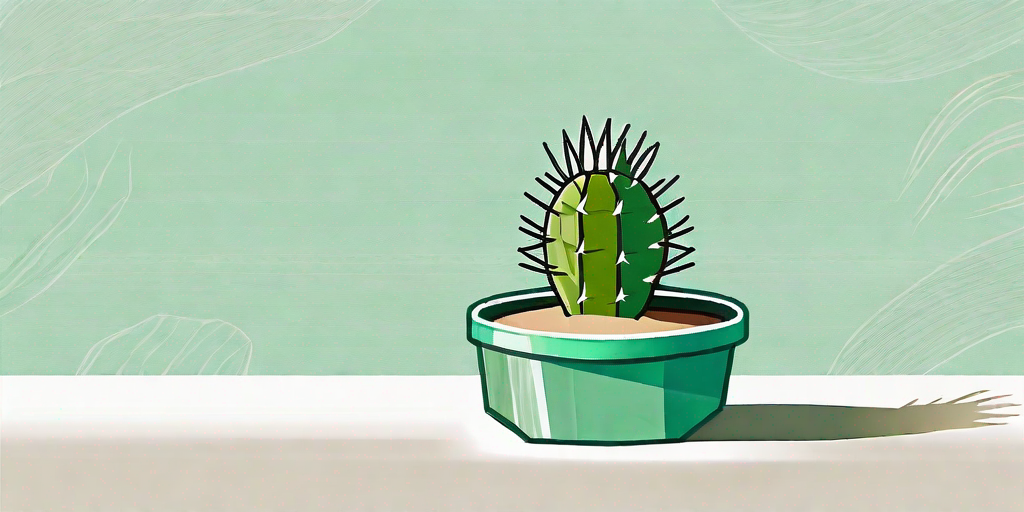
Welcome to the world of spiky succulents, where the plants are as prickly as a porcupine but as charming as a kitten. If you're a beginner looking to venture into the realm of prickly pear cacti, you've come to the right place. We'll guide you through the process of planting and caring for these unique plants, and before you know it, you'll be a bona fide cactus connoisseur. So, let's dive right in, shall we?
Understanding the Prickly Pear Cactus
Before you start planting, it's crucial to understand what you're dealing with. The prickly pear cactus, scientifically known as Opuntia, is a member of the Cactaceae family. This family is known for its resilience, stoicism, and a tendency to be a bit prickly when handled incorrectly - much like your grumpy old uncle.
Prickly pear cacti are native to the Americas, but they've made themselves at home in various parts of the world. They're known for their flat, paddle-like segments and their vibrant flowers that bloom in a variety of colors. Now that you're acquainted with the prickly pear cactus let's move on to the planting process.
Planting Your Prickly Pear Cactus
Choosing the Right Spot
Like a sunbathing tourist, prickly pear cacti love the sun. They thrive in full sunlight, so choose a spot in your garden that gets plenty of it. If you're planting indoors, place your cactus near a window that gets ample sunlight. Just make sure it's not too close to the window, as the glass can intensify the heat and cause sunburn.
Prickly pear cacti are not fussy about soil types. They can grow in sandy, loamy, or clay soils. However, the soil must be well-draining to prevent waterlogging, which can lead to root rot. If you're planting in a pot, make sure it has drainage holes at the bottom.
Planting the Cactus
Planting a prickly pear cactus is as easy as pie - just without the delicious smell and the inevitable sugar crash. Start by digging a hole that's twice as wide and deep as the root ball of your cactus. Place the cactus in the hole, making sure the top of the root ball is level with the soil surface. Then, backfill the hole with soil, firming it gently around the base of the cactus.
Once planted, water your cactus thoroughly. This will help settle the soil around the roots. After this initial watering, let the soil dry out completely before watering again. Remember, prickly pear cacti are desert plants, and they're more likely to forgive you for underwatering than overwatering.
Caring for Your Prickly Pear Cactus
Watering and Feeding
When it comes to watering your prickly pear cactus, less is more. These plants are drought-tolerant and can survive with minimal watering. In fact, overwatering is one of the main causes of death for these cacti. So, if you're unsure whether to water or not, it's probably best to hold off.
As for feeding, your prickly pear cactus doesn't require much. A slow-release fertilizer applied once in the spring should suffice. Just make sure the fertilizer is low in nitrogen, as too much nitrogen can cause excessive growth and make your cactus more susceptible to disease.
Pruning and Repotting
Pruning your prickly pear cactus is a bit like giving a haircut to a hedgehog - it requires a steady hand and a good pair of gloves. Prune your cactus in the spring or early summer to remove dead or diseased segments. You can also prune to control the size and shape of your cactus.
Repotting your cactus is necessary only when it outgrows its current pot. When repotting, choose a pot that's one size larger than the current one. Fill the pot with a well-draining cactus mix, place your cactus in the pot, and backfill with more soil. Remember to handle your cactus carefully to avoid getting pricked.
Frequently Asked Questions
- How often should I water my prickly pear cactus?
Water your cactus only when the soil is completely dry. This could be once a week in the summer and once a month in the winter.
- Can I grow a prickly pear cactus from a cutting?
Yes, you can. Simply take a cutting from a healthy cactus, let it dry for a few days to form a callus, and then plant it in well-draining soil.
- Why is my prickly pear cactus turning yellow?
This could be a sign of overwatering. Cut back on watering and make sure your cactus is planted in well-draining soil.
There you have it - a comprehensive guide to planting and caring for prickly pear cacti. With a bit of patience and care, you'll soon have a thriving cactus that adds a touch of desert charm to your garden or home. So, what are you waiting for? Get planting!















